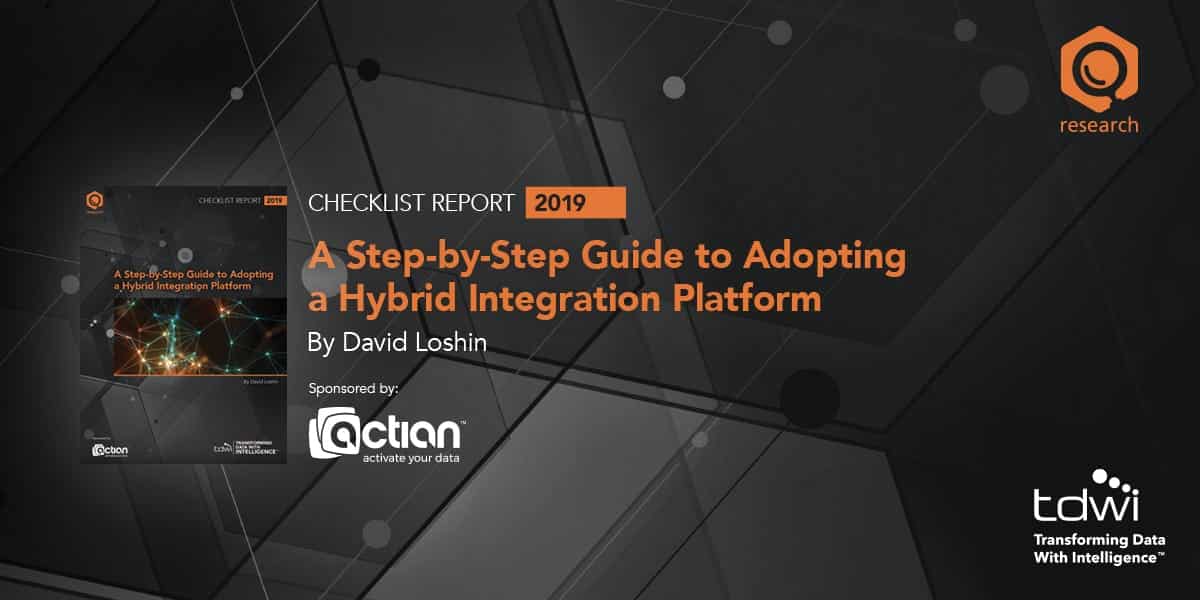A Guide to Adopting Hybrid Integration Platform
Actian Corporation
June 6, 2019

There are three key trends that have motivated a rapid yet radical transition in how organizations manage their information environments, namely:
- As-a-Service Platforms, such as software-as-a-service (SaaS) and platform-as-a-service (PaaS) environments, that allow organizations to transition core business and data management functionality to external service providers.
- Cloud Computing, which provides a broad array of low-cost hosted computing, storage, and application services.
- Modernization, the desire to consider ways to re-engineer existing business applications to better meet both current and anticipated business requirements.
Together, these trends have triggered waves of data and process migration out of the traditional on-premises data center toward a variety of hosted and cloud-based environments. Yet this migration cannot take place in one fell swoop. Modernization must be planned and incrementally executed, resulting in the growing complexity of what could be called a hybrid environment. These hybrid environments conceptually incorporate data and system services across a variety of platforms including on-premises, a variety of hosted cloud environments, as well as a growing pool of operational systems or Internet of Things (IoT) devices that stream data.
A hybrid integration platform (HIP) is a suite of capabilities that address the challenges of integration across a variety of platforms, sources, and applications.
Gartner specifies that a true HIP should support:
- Personas (constituents): Integration specialists, ad hoc integrators, citizen integrators and digital integrators.
- Integration Domains: Application, data, B2B and process.
- Endpoints: On-premises devices, the cloud, mobile devices and IoT devices.
- Deployment Models: Cloud (potentially across multiple environments), on-premises, hybrid (cloud and on-premises) and embedded in IoT devices [as well as XaaS platforms and applications]”.
Although you need the right tools and technology for a HIP, there are some important concepts to focus on if you plan to embrace this kind of environment. This checklist report highlights some of these concepts and provides a step-by-step guide for adopting a hybrid integration platform.
Please click on this link to download this checklist.
Subscribe to the Actian Blog
Subscribe to Actian’s blog to get data insights delivered right to you.
- Stay in the know – Get the latest in data analytics pushed directly to your inbox.
- Never miss a post – You’ll receive automatic email updates to let you know when new posts are live.
- It’s all up to you – Change your delivery preferences to suit your needs.
Subscribe
Subscribe to the Actian Blog
Subscribe to Actian’s blog to get data insights delivered right to you.
- Stay in the know – Get the latest in data analytics pushed directly to your inbox
- Never miss a post – You’ll receive automatic email updates to let you know when new posts are live
- It’s all up to you – Change your delivery preferences to suit your needs